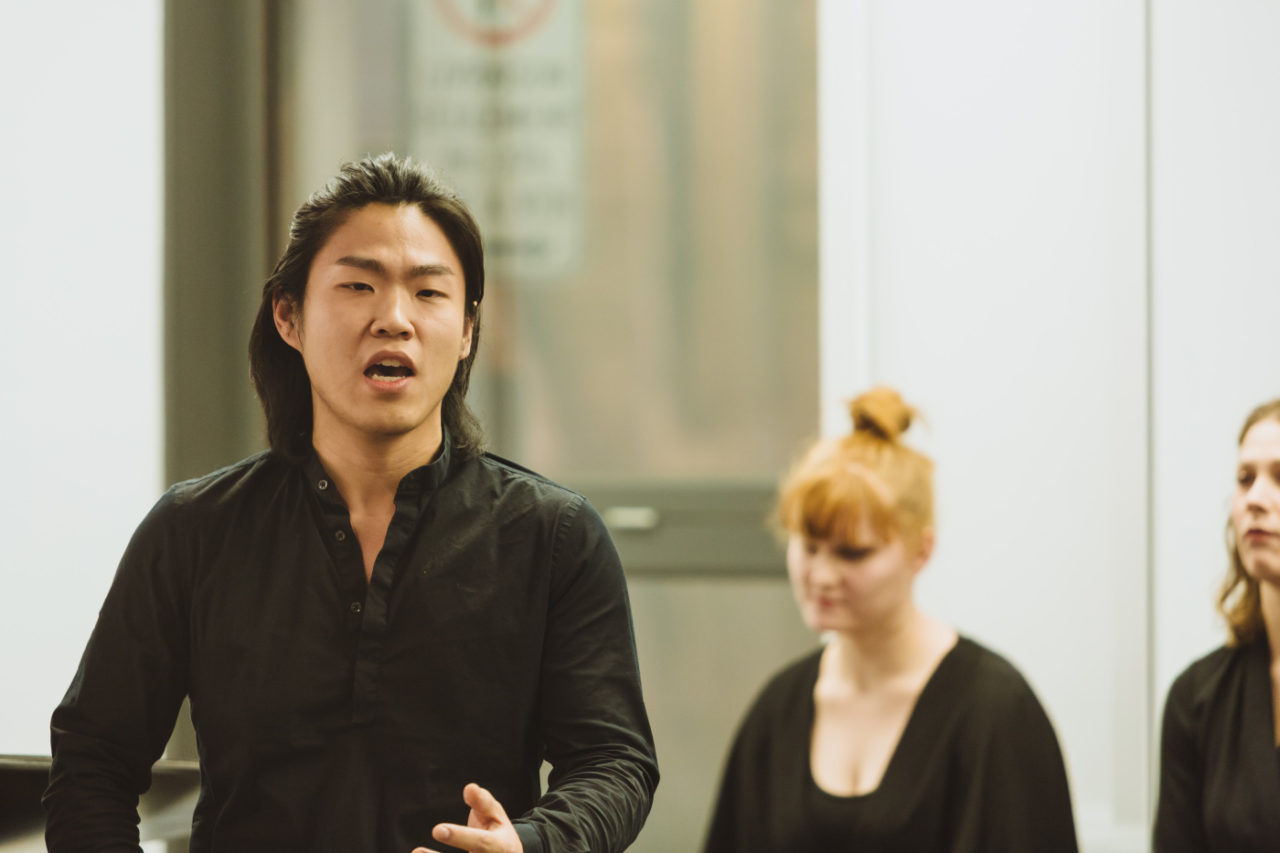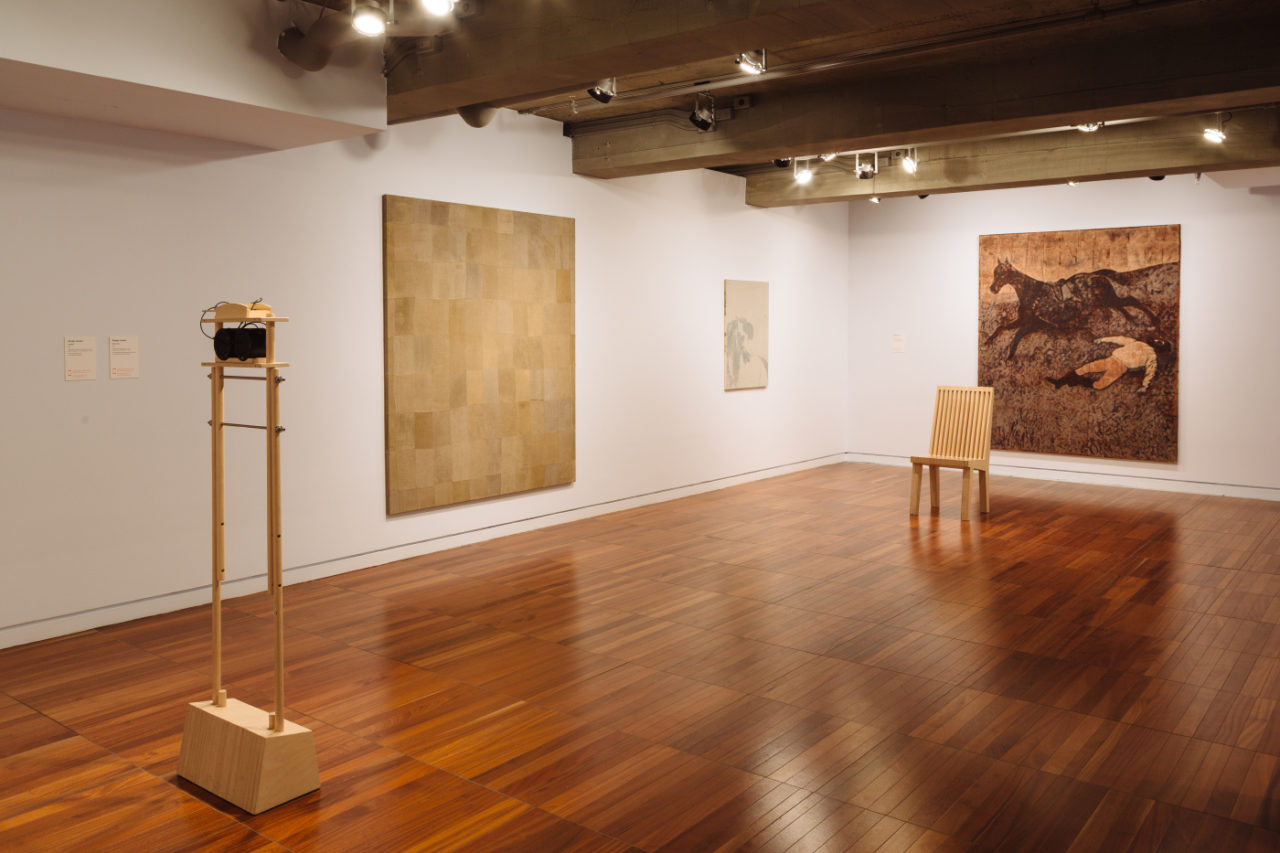The Voices Behind Sonic Blossom: Feng Xiong
The Voices Behind Sonic Blossom: Feng Xiong
Sonic Blossom, created in 2013 after the artist’s mother underwent an invasive surgery, explores the connection between two beings, and how that relationship can be altered by the offering of a transformational gift.
My name is Anna Sadofsky, and I have been working at DHC/ART since August 2016. For the exhibition L’OFFRE, I act as a caretaker for the singers performing in Sonic Blossom by Lee Mingwei. My participation in this piece allows for the singer to maintain a position of a demigod, acting as somewhat of a buffer between the singer and the recipient. I have been fortunate enough to witness and experience the power of the performance firsthand, and have engaged in conversations with all of the singers to reflect on this magical piece.
As performing is a continuous aspect of your life outside of the position of demigod in the Sonic Blossom piece, the process of preparing for a role is something of familiarity. What does your routine prior to each Sonic Blossom performance consist of, and how does it vary from roles you’ve explored in past productions?
Feng Xiong: A Sonic Blossom day usually starts with me slowly warming up and wandering around my apartment as I get ready to go to the gallery. In terms of vocal preparation, I would start with some quiet humming and slowly move on to different vows. To me, the difference between preparing for Sonic Blossom performance and most other ones is that I usually try to think as much as I can about the role and content when it is a theatrical performance or a recital; whereas with Sonic Blossom it is about keeping the mind fresh. I usually do not rehearse the songs even in my mind before going to the venue. With the half an hour given for us prior to our performances, I would let my body and mind adapt to the space in the museum while keeping an eye on my voice being woken up.
The Transformation Cloak worn for each presentation introduces a variety of inquiries by the visitors, both on its visible beauty and its importance to the overall piece. How has the costume come to play a part in your characterization of this role? At this point in the show, do you feel presenting the gift sans-robe would affect your performance?
FX: Last weekend I got to do a morning shift for the first time to cover for a colleague and I had the chance to do a sound test for the first time without the cloak. I sang all three of my chosen songs, what I felt was that I could put more of my own ego while I sang out of the character and it in a way felt free. That being said, I view the presence of the Transformation Cloak as some kind of ritual implement which gives the performer the special identity and duty of the “demigod”. We are different singers in this job, but in this sense we are embodying the same spirit, only with different voices. The cloak gives me a sense of ceremony during the performance which makes my own body only a medium to connect the music to the receiver of the song.
Many visitors are unaware of the emotionally charged backstory that spurred the creation of this piece prior to receiving the gift. Do you find the responses of the visitors change in any way once they’re informed of the origin of the work?
FX: I am not a very talkative “demigod”, in the sense that I would not actively go to the receiver after my performance. I usually stand in my spot for a few more seconds to observe whether the receiver has an interest in knowing more about the piece from me. As a result, conversations did not happen all the time after my performance. There were a few times that the receiver came and asked about the song as well as the backstory of the art piece and not many have had words to express their own ideas on the spot. I do remember this one time a woman who was quite inspired by the personal attachment the artist had within the piece and was generous enough to share her thoughts.

You’ve encountered visitors who have backgrounds in music, singing, or a familiarity with the German language. How does the exchange differ, if at all, when the receiver is familiar with the aforementioned attributes, in comparison to visitors with no experience in those fields?
FX: There have been a couple of times I sang to visitors that had a knowledge of the German language, but never a native German speaker. They did not comment much except acknowledging that they know the language. Some people with experience in classical music would recognize that the pieces are by Schubert. It terms of how the exchanges differ, I honestly did not feel a real difference. Although I would say the people I sang to who were emotionally affected the most were not familiar with classical singing at all. Some of the power of the presentation comes from “Wow, I have never been sung to face-to-face before.”
The spontaneity of the offering often catches visitors off guard, and frequently leads to a beautiful and emotional exchange, somewhat led by the innocence of the receiver. Due to the uninhibited reaction of the receiver, you’ve surely encountered a variety of responses once the piece is finished. From facial expressions to verbal exchanges, are there any moments or comments that have aided in shaping this experience that you’d like to touch on?
FX: How the visitor connects with me - through facial expression or body postures - during my singing largely affects my experience in singing to them. Some of the visitors would seem very welcoming to let my performance in. I could at times sense the emotions poured by themselves through my body trying to reach the receiver when the connection was great. Sometimes I would also feel resentment during the performance and I would sense the guards of the receiver go up. I would make more efforts in this case to reach out during my singing. If no connection was made during the performance and the visitor seemed uncomfortable throughout the piece, I would feel a bit down about it and would usually choose to go back to the green room for a few minutes. Although I understand how people are different in how long after meeting a new person they would drop their guards, I always enjoyed if the receiver came to me after receiving the gift to comment on the experience in any aspect. Most of them would comment on my voice to start with and that did give me a lot of confidence in singing in general. A few people teared up and expressed their appreciation which I felt very touched seeing. However, I would say just the receiver appearing welcoming during my performance would make it especially easier to form an ideal experience.

One of the most beautiful aspects to this piece is the spontaneity of the offering, as the singers take pride in the process of choosing a lucky visitor to receive the gift. How do you decide who to present the gift to in a gallery full of deserving people?
FX: I had a lot of different reasonings [for choosing a receiver]. Sometimes I would choose someone looking at me or reading the description of the piece on the wall. At times I choose people who seem curious in general. Sometimes I would even choose people who I thought would not likely appreciate the piece judging from the general vibe. However, most of the time I tried to randomly pick. As you said, everyone deserves the gift, it’s just like everyone deserving connections with others. I believe even the person that seems the least friendly and welcoming on their appearance craves the sense of acceptance and love from within.
Anna Sadofsky
DHC/ART
Photos: Marc-Olivier Bécotte